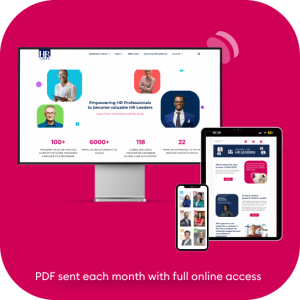In today’s competitive business landscape, organizations are realizing the profound impact that employee wellbeing has on overall productivity, engagement, and success. The wellbeing advantage is a strategic imperative that forward-thinking HR leaders embrace to build a high-performance workforce that can thrive in the face of challenges and drive sustainable growth.
The Undeniable Link Between Wellbeing and Performance
Employees are the lifeblood of any organization, and their wellbeing directly influences their ability to contribute at their highest potential. When employees feel physically, mentally, and emotionally supported, they are more engaged, focused, and motivated, resulting in increased productivity, innovation, and customer satisfaction. Prioritizing employee wellbeing is an investment that pays dividends through a more committed, resilient, and high-performing workforce.
The Multidimensional Approach to Wellbeing
Wellbeing encompasses various aspects, including physical health, mental health, financial wellness, and work-life balance. A comprehensive wellbeing strategy addresses all these dimensions, recognizing that they are interconnected and contribute to an employee’s overall sense of fulfillment and satisfaction. Adopting a holistic approach to wellbeing ensures that no aspect is overlooked, leading to a more balanced and sustainable workforce.
Physical Wellbeing: Fostering a Culture of Health
Physical wellbeing is the foundation upon which other aspects of wellbeing are built. Encouraging healthy habits, such as regular exercise, proper nutrition, and adequate sleep, can significantly impact employees’ energy levels, focus, and resilience. Employers can support physical wellbeing by offering wellness programs, on-site fitness facilities, and incentives for healthy living.
Mental Wellbeing: Prioritizing Emotional Health
Mental health is a critical component of employee wellbeing in the workplace. Stress, anxiety, and burnout can have detrimental effects on employee performance and overall organizational success. Employers can promote mental wellbeing by providing access to counseling services, stress management resources, and creating a supportive and inclusive culture that destigmatizes mental health conversations.
Financial Wellbeing: Empowering Financial Security
Employers can enhance their employees’ financial wellbeing by providing valuable resources and support. This can include initiatives like financial literacy programs, retirement planning assistance, and aid in managing expenses. One important aspect is guiding individuals on navigating gap health insurance between jobs or during transitional periods, ensuring they have access to necessary coverage and support during such transitions.
Work-Life Balance: Fostering Flexibility and Integration
Achieving a healthy work-life balance is crucial for employee wellbeing and engagement. Employers can promote work-life balance by offering flexible work arrangements, generous time-off policies, and resources to help employees effectively manage their personal and professional responsibilities. Striking the right balance between work and personal life contributes to improved overall wellbeing, reduced burnout, and increased job satisfaction.
Building a Culture of Wellbeing
Implementing a wellbeing strategy is not a one-size-fits-all approach. It requires a deep understanding of the organization’s unique challenges, workforce demographics, and cultural nuances. Successful wellbeing initiatives are built on open communication, employee feedback, and continuous improvement.
Leadership Commitment and Engagement
Wellbeing initiatives cannot succeed without the commitment and engagement of organizational leaders. Leaders must champion wellbeing as a strategic priority, lead by example, and actively participate in creating a culture that values and supports employee wellbeing.
Measuring and Optimizing Wellbeing Initiatives
Implementing wellbeing initiatives is just the beginning. Employers must continuously measure the impact of their efforts and gather feedback from employees to refine and optimize their wellbeing strategies. This data-driven approach ensures that resources are allocated effectively and initiatives are tailored to meet the evolving needs of the workforce.
Conclusion
The wellbeing advantage is no longer a luxury but a strategic imperative for organizations seeking to build a high-performance workforce capable of navigating the complexities of the modern business world. By prioritizing employee wellbeing across all dimensions, employers can unlock the full potential of their workforce, drive innovation, and achieve sustainable success. Embrace the wellbeing advantage and reap the rewards of a thriving, engaged, and productive workforce.
Guest writer.













